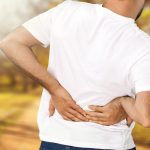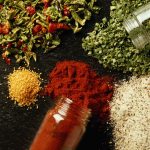
When made at home, smoothies can be delicious and nutritious (store-bought versions often contain lots of sugar and an abundance of calories). But when it comes to feeling satisfied, a rich, thick soup has them beat. There’s science behind the diet tip to eat filling soup when the soup is a thick, blended puree. A study published in the Journal of Nutrition found that you’ll feel fuller for an hour longer than you would if you ate the same ingredients in their whole form while sipping a glass of water. Think of a pureed soup as a savory smoothie, perfect for cool weather. It’s fast and easy to turn a cooked vegetable like squash, carrots, peas or sweet potatoes into a hearty meal with a traditional or immersion blender, or a food processor. Cauliflower is particularly versatile because, as a soup base, it will take on the taste of whatever herbs, spices or other ingredients you flavor it with. If you’re short on time, you can use frozen vegetables. If you want to start from scratch, bring out the most flavor by roasting the vegetables in the oven. Alternatively, you can sweat them on the stovetop in a small amount of oil to soften them before adding enough water to just barely cover them and simmering until tender before you puree. Try to always include… read on >
















